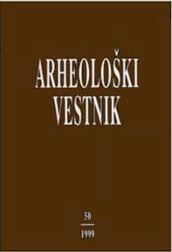L'Istria tra l'antichita classlca e la tarda antichita
Abstract
The gradual economic-social transformation of Istria from the Caesarian period to the late Roman period is discussed. Istria had the character of a province in the late Roman period, oriented to agriculture and primarily self-reliant. The author illustrates this period with several excavated sites and various categories of archaeological material. Istria became a refuge for inhabitants from the Danubian regions in the 5th century. Despite the fact that Istria was not directly affected by the barbarian invasions, fortified settlements also began to be constructed here. A gradual transition from refugii to permanent settlements can be noted. Special attention is paid to the so-called castrum on Brijuni Island, where at the end of the 5th century a fortified settlement was created at the site of an earlier Roman villa, continuing in existence to the modern period. Three large late Roman warehouses are also mentioned, confirming the economic stability of Istria in this period. The continuity of existence of the indigenous population, particularly in southern and western Istria, is shown in addition to the above by small, frequently preserved pre-Romanesque churches, most often constructed on Roman ruins, and by the numerous still preserved toponyms.
Downloads
Downloads
Published
How to Cite
Issue
Section
License

This work is licensed under a Creative Commons Attribution-NonCommercial-ShareAlike 4.0 International License.
Authors guarantee that the work is their own original creation and does not infringe any statutory or common-law copyright or any proprietary right of any third party. In case of claims by third parties, authors commit their self to defend the interests of the publisher, and shall cover any potential costs.
More in: Submission chapter





